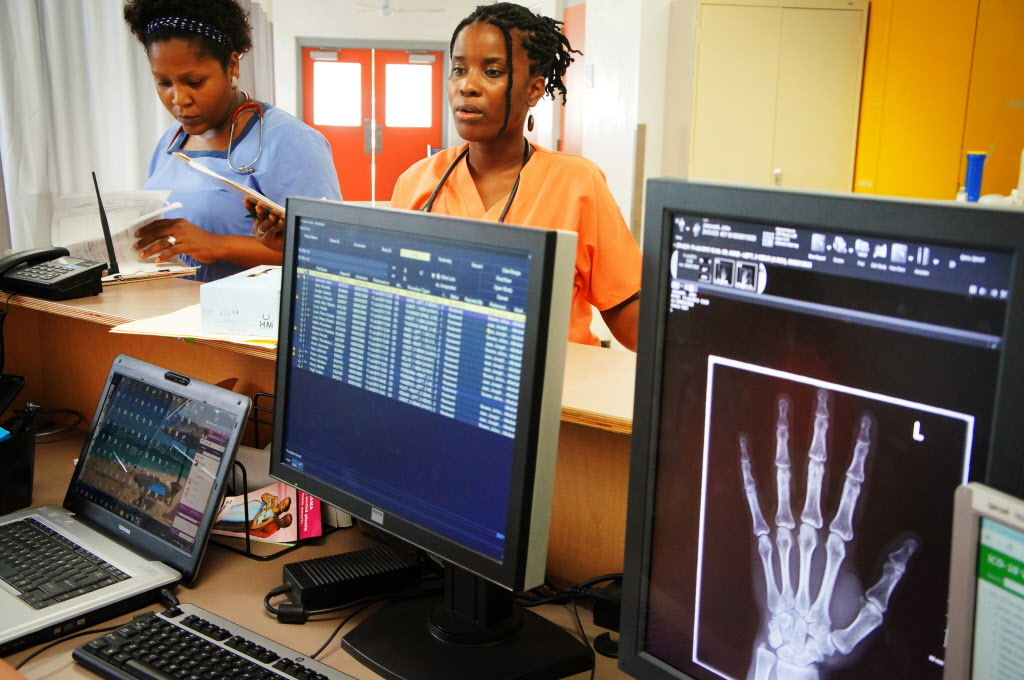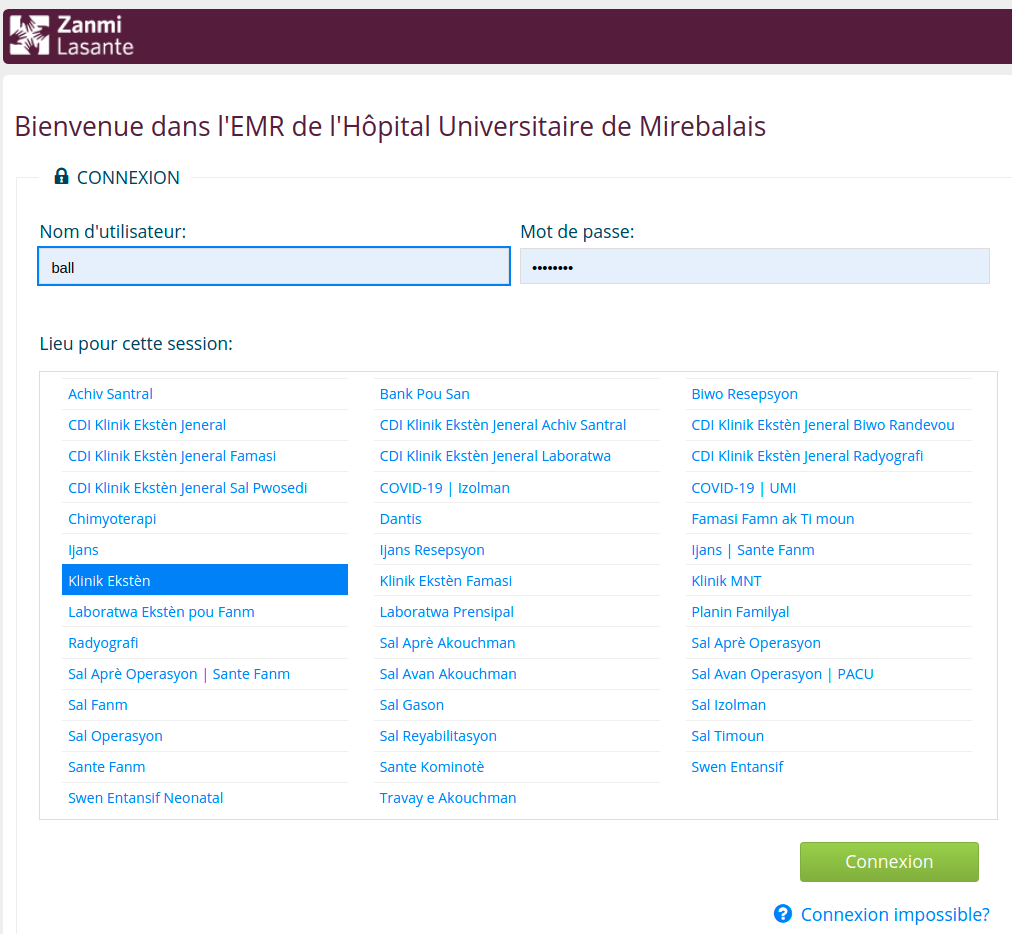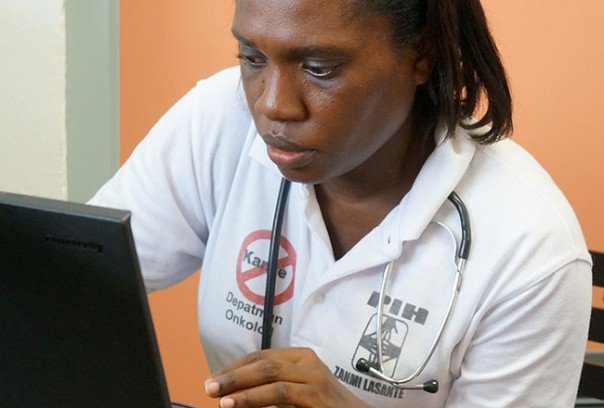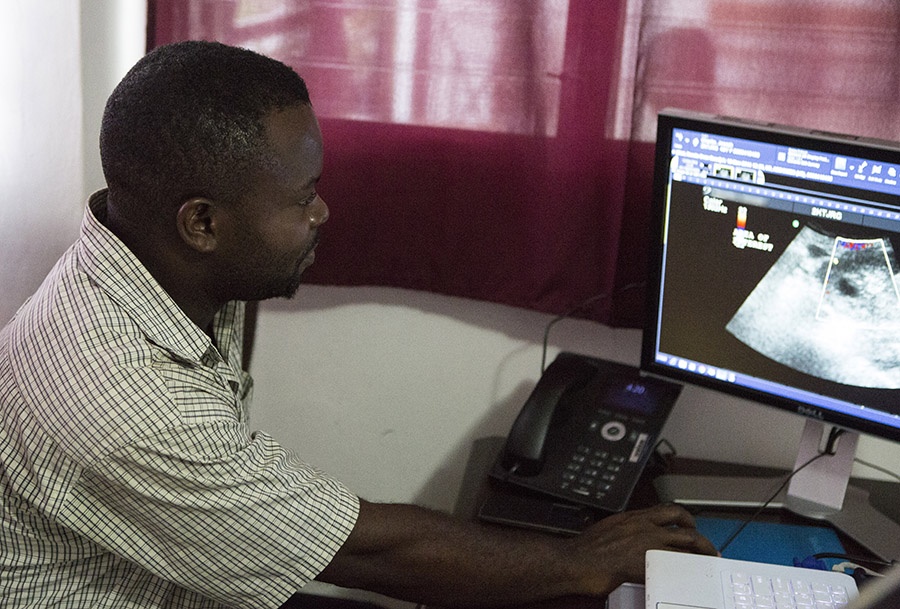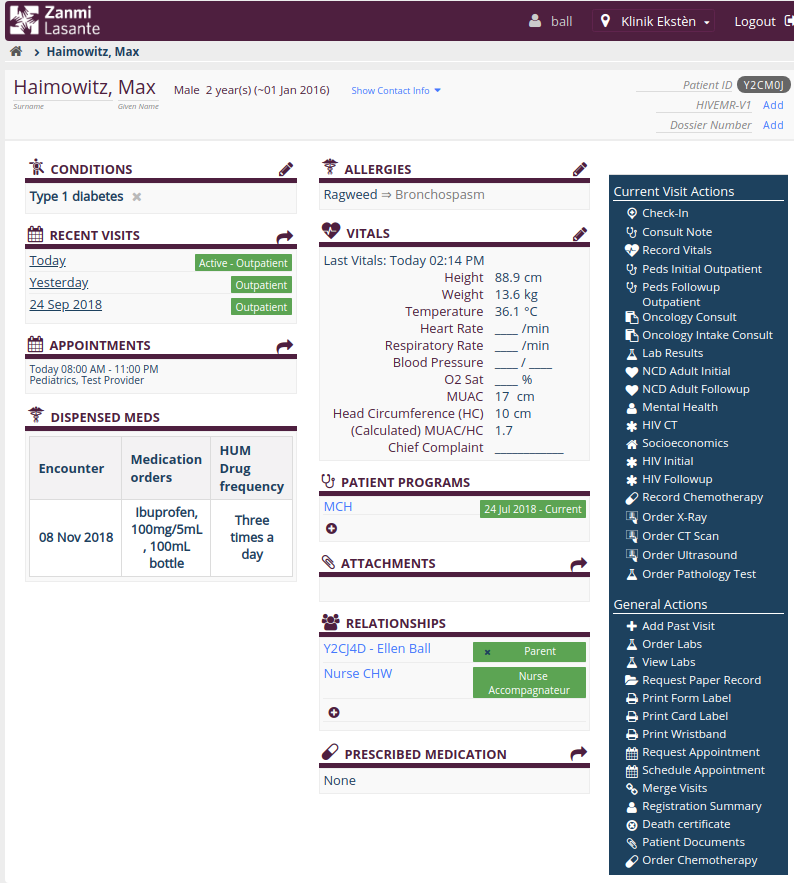University Hospital of Mirebalais (UHM) EMR Case Study
In response to the January 2010 earthquake, Partners In Health (PIH) in Haiti, known locally as Zanmi Lasante (ZL), expanded plans for a health center in Mirebalais, a small city in the Central Plateau of Haiti. The plan was broadened to a tertiary/teaching hospital where dignified and comprehensive care could be provided to patients along with training the next generations of nurses, doctors, specialists, and staff while working in support of the Ministry of Health’s goal of universal treatment coverage.
In March 2013, PIH/ZL opened University Hospital in Mirebalais (Haiti) with an OpenMRS (EMR system) to manage patient and clinical workflow. As additional services were opened in the first 2 months (Radiology, Women’s Health, Emergency, Surgery, Dental, et al), new features were added to the EMR. The EMR continues improving to meet the needs of this 300 bed hospital along with 1000 outpatient visits per day. Inception started in September 2012 and was based on an outpatient primary care OpenMRS system with point-of-care registration and data entry of diagnoses from paper forms (Feb 2012) at the Zanmi Lasante (ZL) Lacolline Health Center in Lascahobas, Haiti.
Timeline
“Next we drove into the city of Mirebalais to see the new hospital run by PIH and the Haitian government. I was blown away. The hospital opened last summer and was built using money donated after the 2010 earthquake (people who were injured in the quake still need ongoing treatment). They spared no expense to make it a first-class facility. There’s a machine for performing CAT scans. There’s a sophisticated system for keeping medical records. The staff can send digital images to Harvard and get input from specialists there.”
-- Bill Gates on March 4, 2014
Technical specifications
The PIH EMR is built with the OpenMRS Reference Application and Platform 2.x along with customized workflow, htmlforms, and reports. The ZL EMR is available in Haitian Kreyol, French, and English. The UHM concept dictionary has a curated list of diagnoses, procedures,and drugs. Most of these concepts are shared with the CIEL dictionary. Standard coding terminology is used:
Laboratory tests and radiology orders → LOINC
Procedure → SNOMED
Diagnoses → ICD10, SNOMED
Medications → RxNORM
With local server hardware, reliable internet is not required. Internet is utilized when available for data backup and system maintenance. The infrastructure included internet, local area network, multiple power sources (solar, grid, generator, and battery backups), A/C, and HP rack server. The HP server is running VMware virtualization with Ubuntu 14.04 LTS 64-bit. 170 HP thin clients are distributed throughout the hospital and installed with Citrix software, Windows desktop, and Chrome browser. Laptops and tablets are also utilized.
Github: https://github.com/PIH
Modules:
addresshierarchy-2.14.2.omod
allergyui-1.8.3.omod
appframework-2.16.0.omod
appointmentscheduling-1.13.0.omod
appointmentschedulingui-1.10.0-SNAPSHOT.omod
appui-1.13.0.omod
attachments-2.4.0.omod
calculation-1.2.1.omod
coreapps-1.32.0-SNAPSHOT.omod
dispensing-1.3.0-SNAPSHOT.omod
edtriageapp-1.4.0.omod
emr-2.2.0.omod
emrapi-1.30.0.omod
event-2.8.0.omod
growthchart-2.1.0.omod
haiticore-1.0.0.omod
htmlformentry-4.0.0-SNAPSHOT.omod
htmlformentryui-2.0.0-SNAPSHOT.omod
htmlwidgets-1.10.0.omod
idgen-4.7.0-SNAPSHOT.omod
importpatientfromws-1.0.omod
initializer-2.1.0-SNAPSHOT.omod
labtrackingapp-1.2.0-SNAPSHOT.omod
legacyui-1.8.1.omod
metadatadeploy-1.13.0-SNAPSHOT.omod
metadatamapping-1.3.5.omod
metadatasharing-1.7.0.omod
mirebalais-1.3.0-SNAPSHOT.omod
mirebalaisreports-1.2.0-SNAPSHOT.omod
namephonetics-1.17.0.omod
owa-1.12.0.omod
pacsintegration-1.7.0.omod
paperrecord-1.3.0.omod
pihcore-1.1.0-SNAPSHOT.omod
printer-1.4.0.omod
providermanagement-2.12.0.omod
radiologyapp-1.6.0-SNAPSHOT.omod
registrationapp-1.22.0.omod
registrationcore-1.10.0.omod
reporting-1.21.0.omod
reportingrest-1.11.0.omod
reportingui-1.7.0.omod
serialization.xstream-0.2.14.omod
spa-1.0.6.omod
uicommons-2.16.0.omod
uiframework-3.21.0-SNAPSHOT.omod
uilibrary-2.0.6.omod
webservices.rest-2.30.0-SNAPSHOT.omod
Update
The same software (PIH EMR) is deployed at other ZL Health Facilities. It is used at other Partners In Health supported sites (Liberia, Sierra Leone, Mexico). Coming to Peru in 2021.
Future
The cost and complication of ID cards is driving the need for alternative identification technology (ie. fingerprinting). DHIS2, data warehouse, and PowerBI are powerful technologies and increase productivity especially for the Monitoring & Evaluation team. PIH and ZL continues to improve collaboration with the Haiti Ministry of Health (MSPP) and other important Haiti-based partners. PIH aspires to have consistent EMR systems at all our ZL and other PIH health facilities.
Contributors
Zanmi Lasante and UHM leadership, clinicians, IT, and staff -- especially David Walton, Jim Ansara, Boston Medical Informatics (Ellen Ball, David DeSimone, Mark Goodrich, Cosmin Ioan, Darius Jazayeri, Renee Orser, Mike Seaton, Louise Secordel, Evan Waters,), Thoughtworks Brazil (Porto Alegre), Jeff Mendel, Maxi Raymonville, Marc Julmisse, Millien Christophe, Regan Marsh, Ainhoa Costas-Chavarri, Shada Rouhani, Linda Rimpel, Gene Kwan, Gesner Ferdinand, Dieuseul Saint Ange, Wilkin Dessin, Brittany Eddy, Ricard Pognon, Gregory Jerome, Jean-Paul Joseph; Donors, Hewlett-Packard, the audacious vision of Ophelia and Paul, and countless others.

